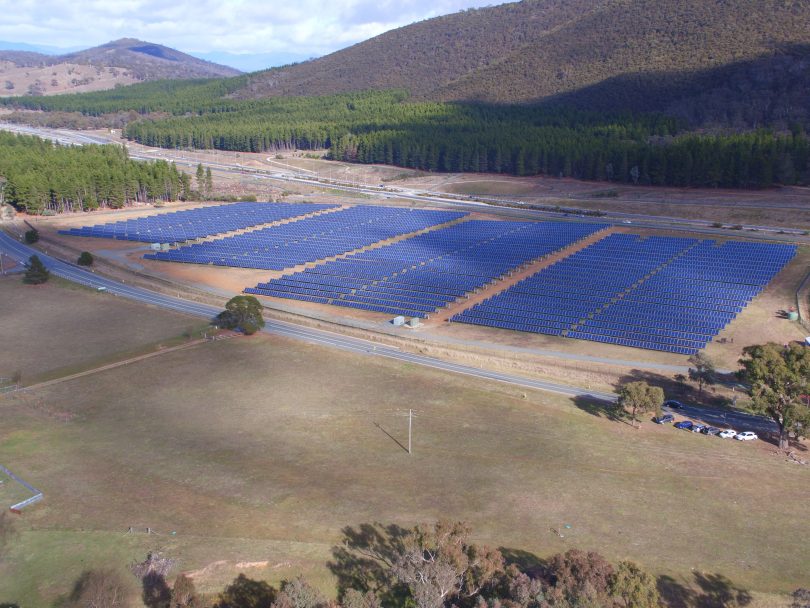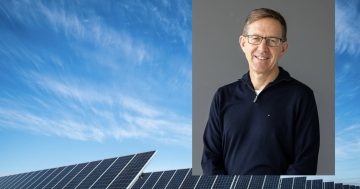
The Mt Majura Solar Farm is part of Canberra’s solar highway and creates enough renewable electricity each year to power around 3,000 Canberra homes. Photo: Supplied.
Researchers in Canberra have set a new record for the conversion of sunlight into energy in their quest to better harness the sun’s energy, which they say could further reduce power bills.
A researcher from the Australian National University’s (ANU) College of Engineering and Computer Science, Professor Kylie Catchpole, said the team set a new efficiency record of 27.7 per cent for mechanically stacked perovskite-silicon tandem cells – meaning 27.7 per cent of sunlight from the cells is converted into energy.
While the previous record was 26 per cent, Professor Catchpole told Region Media the new record is another step forward in the rapid improvements of solar technology where each section of the solar panel produces more power.
“This result demonstrates the potential of tandem solar cells. They can make better use of certain parts of the solar spectrum, for example, high energy blue photons.
“This will lead to more efficient and more cost-effective solar cells and solar energy sources.”
Professor Catchpole also said if the technology is successfully commercialised, it would lead to a significant reduction in the cost of solar electricity, as well as lower energy bills.
“This new efficiency result will help to improve the commercial competitiveness of this technology. It’s exciting to think that a new technology that has the potential to benefit the entire planet is being developed here in Canberra,” she said.
While 100 per cent of the ACT’s electricity is now sourced from renewable sources from January this year, Professor Catchpole said the team is working on achieving even higher efficiency, as well as working on further improving the stability of the new solar cells.
“We’re at the point now where solar is the cheapest technology to install and globally, people are actually putting in more solar than anything else. The same thing is happening with batteries, so the more the technology develops and the more we keep producing them, the more prices will keep coming down.
“The ACT has been positioning itself as a central point of the hub for this technology, which brings companies that invest in it, so this research is part of that vision.
“There are so many things that people can do to reduce their CO2 emissions and it’s great to see the ACT leading in this space,” Professor Catchpole said.
She said the team’s research involved stacking a perovskite solar cell on top of a silicon cell, which effectively squeezes more energy from the sunlight.
A perovskite solar cell is a new type of solar cell which uses organic and inorganic materials in a specially built structure that enhances light absorption. These cells can react to various different wavelengths of light to better harness the sun’s energy.
In contrast, silicon solar cells are made only from inorganic materials and can only absorb red light.
Professor Kylie Catchpole said the efficiency would only need to improve slightly to around 30 per cent before the technology could be rolled out around the world.
“In comparison, typical solar panels being installed on rooftops at the moment have an efficiency around 20 per cent,” Professor Catchpole said.
“Silicon solar cells currently dominate the market, however, the efficiency of silicon solar cells is going to reach the limit in the next five to 10 years. The materials that we are using now are really quite new and are performing a lot better than we expected them to, so it shows that there is plenty of scope to develop further.”Lead researcher at the ANU Dr The Duong said the International Technology Roadmap for Photovoltaics predicts tandem solar cells will appear in mass production in 2023.Their research has been published in Advanced Energy Materials.
Original Article published by Michael Weaver on The RiotACT.










